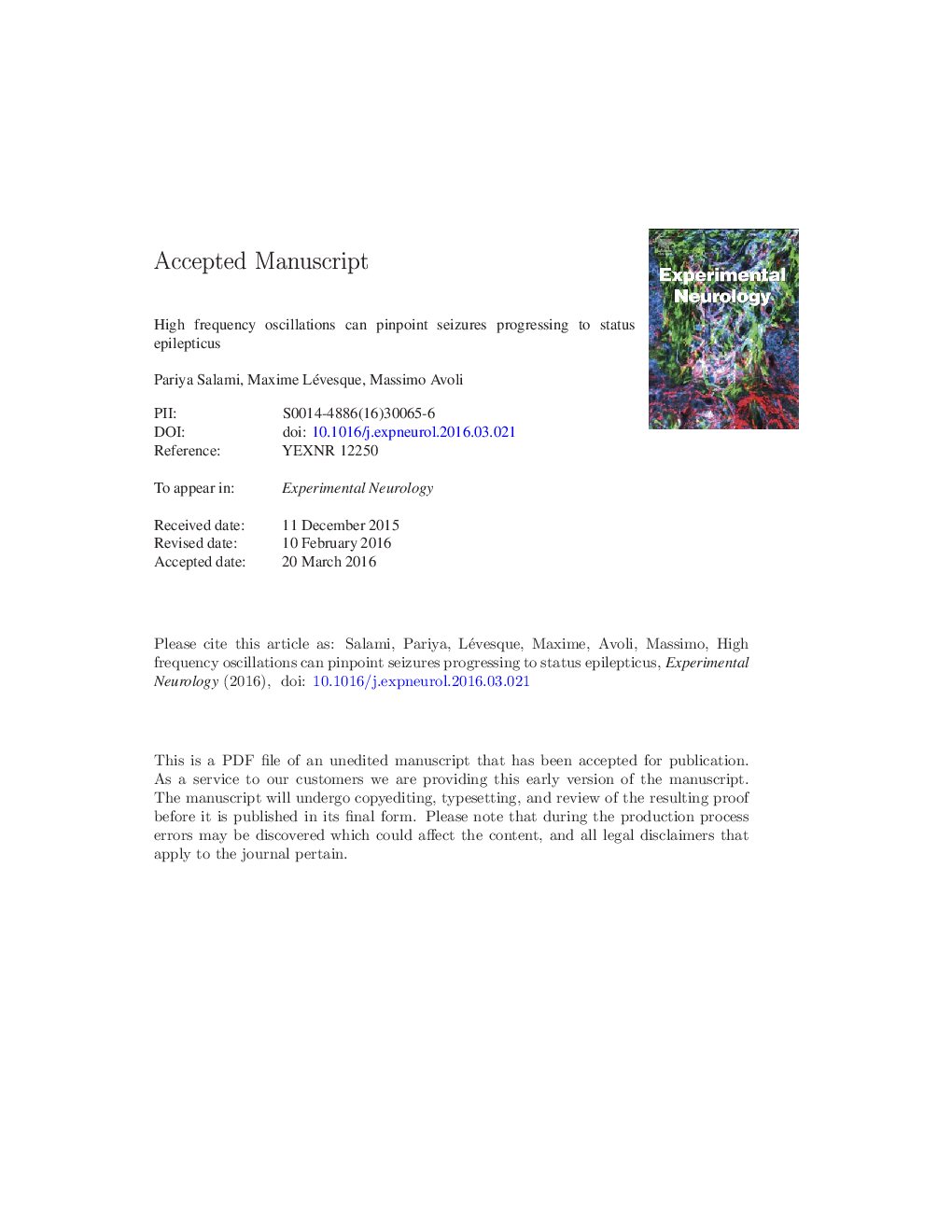| Article ID | Journal | Published Year | Pages | File Type |
|---|---|---|---|---|
| 6016971 | Experimental Neurology | 2016 | 24 Pages |
Abstract
Status epilepticus (SE) is defined as a seizure lasting more than 5 min or a period of recurrent seizures without recovery between them. SE is a serious emergency condition that requires immediate intervention; therefore, identifying SE electrophysiological markers may translate in prompt care to stop it. Here, we analyzed the EEG signals recorded from the CA3 region of the hippocampus and the entorhinal cortex in rats that responded to systemic administration of 4-aminopyridine (4AP) by generating either isolated seizures or seizures progressing to SE. We found that high frequency oscillations (HFOs) - which can be categorized as ripples (80-200 Hz) and fast ripples (250-500 Hz) - had different patterns of occurrence in the two groups (n = 5 for each group). Specifically, fast ripples in CA3 and entorhinal cortex of the SE group occurred at higher rates than ripples, both during the ictal and post-ictal periods when compared to the HFOs recorded from the isolated seizure group. Our data reveal that different patterns of HFO occurrence can pinpoint seizures progressing to SE, thus suggesting the involvement of different neuronal networks at the termination of seizure discharges.
Related Topics
Life Sciences
Neuroscience
Neurology
Authors
Pariya Salami, Maxime Lévesque, Massimo Avoli,
